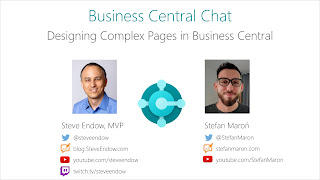On September 27, 2021, Tobias Fenster shared a Microsoft announcement about the future of Docker Engine Enterprise, sometimes referred to as "Docker EE".
This Microsoft announcement comes
almost 2 years after Docker was acquired by a company named Mirantis, in November 2019.
The Microsoft announcement indicates that technical support for the Mirantis Container Runtime will be transitioned to Mirantis.
Mirantis also published a post explaining the transition, and discussing options for receiving support for Mirantis Container Runtime (aka "MCR"), and free licenses for up to 9 "nodes" for Windows Server users.
So what does this mean for Business Central developers who use Windows Server?
When I first read the Mirantis blog post, I assumed I would need to contact Mirantis to take advantage of their "special offer" to receive a free license for MCR for my Business Central development on Windows Server.
This page on the Mirantis web site explains the "beta pricing" offer is available until December 31, 2021.
I thought that I would request licenses for a few nodes, which would cost me $0. But, that would NOT include any support.
I'm okay with the $0 price tag, and if I did need support for some reason, I would be open to paying a reasonable price for support. I would even be open to paying $50 per node to receive limited support, but based on the information on the web page shown above, it is not included by default with the 1-9 or 10-50 note packages by default. But it may be possible to purchase support separately for 50 nodes or less.
I'm assuming that after December 31, 2021, Mirantis will come up with new pricing, and MCR will not be free for Windows users.
What about "Moby"?
But today I re-read the Mirantis blog post and noticed this.
Wait, what?
I'm a Business Central "developer". I am not using my containers in "production".
Does that mean that I can use the "default Moby engine"? Whatever that means?
I posted my initial thoughts about this to the hive mind called Twitter:
I tagged our resident Business Central Docker expert, Tobias Fenster to see if I was missing anything.
I'm glad I tagged him, because he shared some important information about how Docker works and additional considerations about the Mirantis announcement that I believe are pretty important to Business Central developers.
Tobias replied, and mentioned that the free Moby engine has "No client component".
I didn't know what this meant, so he generously explained further.
So while we could run BC containers using Moby, technically we would not have a docker.exe "client" to manage or create the containers on Windows Server.
It seems we will need MCR
You can
read the rest of the Twitter thread if you would like, but after a few more questions from me, and answers from Tobias, these are the points I think are important for BC developers
who use Docker Engine Enterprise on Windows Server.
1. If you do NOT get a license for the Mirantis Container Runtime (MCR), and choose to use the "Moby engine", that is ONLY the "server" (daemon) portion of the solution. Moby will allow you to host containers, but technically, that does not include the docker.exe "client" or any tools or utilities to help you manage your containers. You could try to find other Docker tools, but Tobias suspects that limited interest in Docker on Windows means limited options for Docker tools on Windows.
2. As a Business Central developer, I regularly use the docker.exe "client" command in PowerShell to manage containers and images. So I believe I will still need that, and therefore will need MCR.
3. The BcContainerHelper PowerShell module that BC developers use to create Business Central containers relies on the docker.exe "client" tool to create and maintain and interact with containers, so I assume that the full MCR solution will be required in order to continue using BcContainerHelper. (there may be other ways to download a docker.exe client or equivalent, but I have no yet researched that)
Given this, I will want to request the MCR licenses from Mirantis so that I can have access to the full MCR product suite on my Windows Servers and continue to reliably use BcContainerHelper.
If you are aware of other solutions that provide a Docker client and related tools on Windows Server and work well with BcContainerHelper, please let me know.
Steve Endow is a Microsoft MVP in Los Angeles. He works with Dynamics 365 Business Central, Microsoft Power Automate, Power Apps, Azure, and .NET.
You can also find him on Twitter and YouTube

















